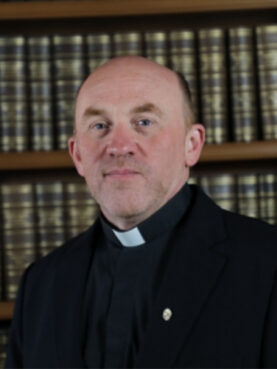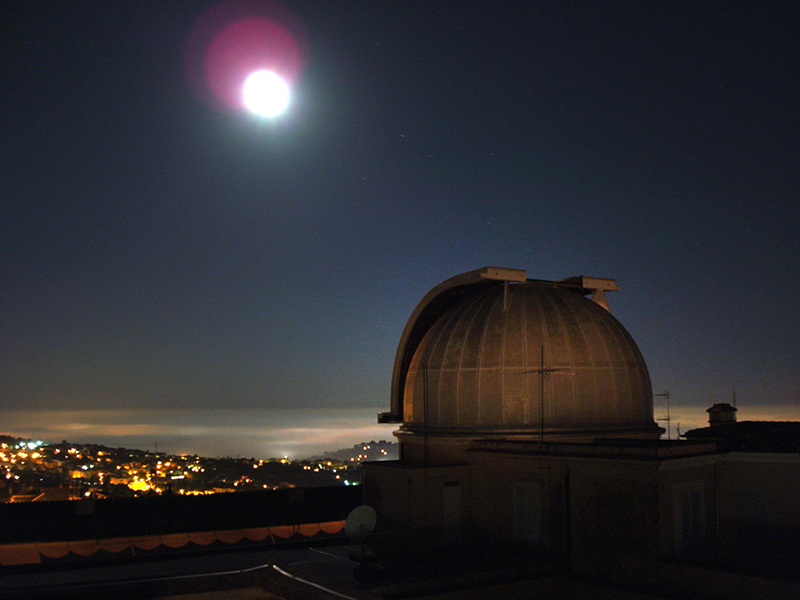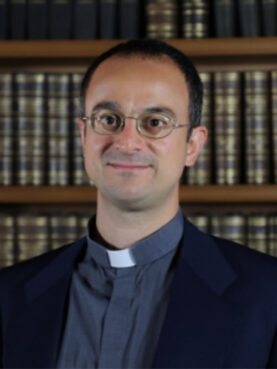VATICAN CITY (RNS) — Two Catholic priests, both astrophysicists from the Vatican Observatory, have suggested a radically new mathematical approach to studying the initial moments following the Big Bang that gave birth to our universe.
Little is known about the first seconds of the universe’s existence, and one of the deeper puzzles is accounting for the role gravity played in those early moments. The Rev. Gabriele Gionti, a Jesuit, and the Rev. Matteo Galaverni, a priest in the Diocese of Reggio Emilia-Guastalla in Northern Italy, set out to propose a new technique that explains how gravity might have behaved as the cosmos expanded rapidly at its inception.
Their research, published in the prestigious Physical Review D journal on April 15, proposes an alternative to the Jordans-Brans-Dicke theory of gravitation, which solves difficulties with Albert Einstein’s general theory of relativity in describing gravity after the Big Bang, but which has its own inconsistencies.
Einstein’s theory works well in explaining the way matter behaves on a large scale but clashes with the way quantum physics describes the gravity among the smallest observable particles. For years, Gionti has attempted to reconcile the two.
The priests’ work is “a tassel within this search that the scientific community has been conducting for many years on quantum gravity, meaning that gravity is capable of affecting (matter) even at a very, very small scale,” said Galaverni in a Zoom interview conducted by RNS with the two priests on Thursday (May 5).
RELATED: Testifying at Vatican megatrial, cardinal rebuts claims that he paid to trap rival

The Rev. Gabriele Gionti. Photo via Vatican Observatory
“We realized that within limits, when the gravitational constant is very high, it’s possible for the speed of light to go to zero, meaning that nothing propagates because gravity is too high,” said Gionti.
“This might be a way to explain what happened after the Big Bang,” he said.
In layman’s terms, Gionti said, “It’s like being in a theater, and until now we have seen the musicians and the orchestra with our eyes. Now with gravitational waves we can also hear the music.”
“This is revolutionizing and will revolutionize the next decades of astronomy,” he added.
Gionti clarified that their “research is based on a very speculative and theoretical mathematical approach,” which will have to be tested in its physical and observable consequences.
They wrote their theory at the Specola Vaticana, the Vatican Observatory in Castel Gandolfo, the pope’s summer residence, drawing up their abstract calculations both on computers and blackboards as they compared and discussed their ideas.
Pope Leo XIII created the Specola in 1918 “in a time of modernism where society accused the church of obscurantism,” Gionti said. The Vatican trials against astronomers and thinkers like Galileo Galilei and Giordano Bruni in the 16th century had pegged the Catholic Church as a “determined opponent to scientific progress,” he explained.

The moon is seen at night in 2007 at the Vatican Observatory at Castel Gondalfo. Photo courtesy of Brother Guy Consolmagno
“The Vatican created the Vatican observatory for priests, nuns and religious to prove to the world that the church directly contributed to science by providing it with an astronomical observatory that worked scientifically like all other observatories,” Gionti said.
Gionti and Galaverni’s work stands on the shoulders of great scientists as well as on the work of religious people. It was a diocesan priest from Belgium, Georges Lemaître, who first theorized the Big Bang in the early 20th century. Numerous priests and religious contributed to today’s understanding of gravity and astronomy. The Jesuit Angelo Secchi laid out the principles for how we classify stars today from the roof of the Church of St. Ignatius in Rome.

The Rev. Matteo Galaverni. Photo via Vatican Observatory
Science and religion are “two complementary approaches that must be respected in their diversity,” Galaverni said, who added that studying the universe is “not something that proves my faith, it’s something that enriches it.”
“Science also teaches me a certain humility in looking at the universe and recognizing our smallness and seeing the greatness of God in this,” he added.
While studying the laws of physics and nature, the universe seems harmonious and well-ordered, he said, adding that “for someone of faith it’s an easy step to recognize in this order the footprint of God.”
Their work has been well received by their scientific peers, “but we are not finished yet. There are other questions that we haven’t answered,” Gionti said.
RELATED: After winning on abortion, it’s time for Catholic bishops to switch parties





